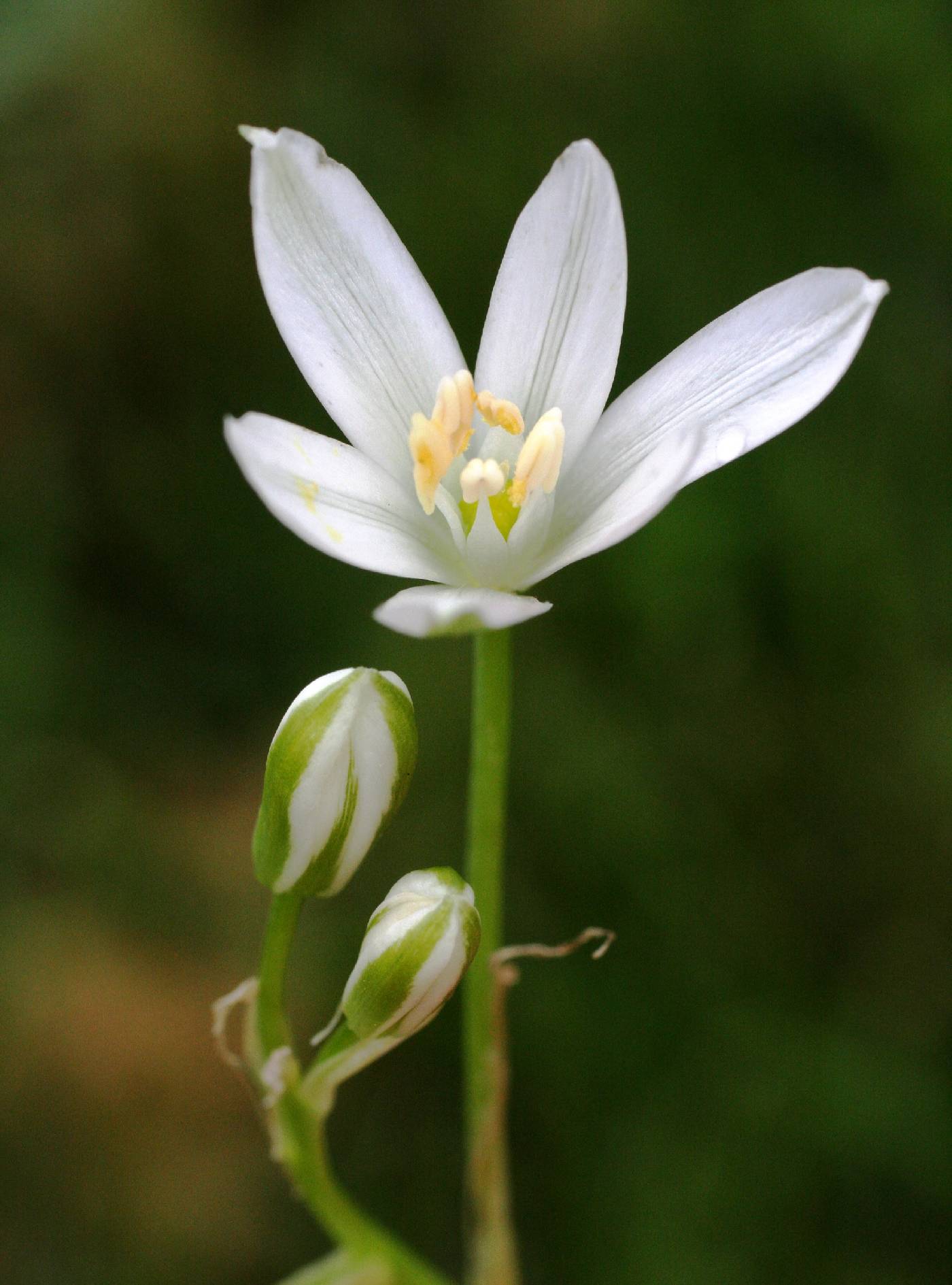Ornithogalum
|
Family: Asparagaceae |
Herbs, perennial, scapose, poisonous, from ovoid, tunicate bulbs; bulb tunics white to pale brown, papery. Leaves few to several, basal; blade linear to lanceolate, margins smooth or hairy. Inflorescences racemose or corymbose, 2-many-flowered, bracteate; bracts white, membranous. Flowers: tepals 6, widely spreading, distinct, equal to slightly unequal; stamens 6, distinct, dimorphic; filaments simple or 3-dentate, flattened; anthers dorsifixed, introrse; ovary superior, green, 3-locular, cylindric to globose, 6-angled, septal nectaries present; style 1; stigma margins entire or indistinctly 3-lobed. Fruits capsular, angled, papery, dehiscence loculicidal. Seeds numerous, globose to ovoid. x = 3, 5, 6, 7, 8, 9, 11. Ornithogalum is a large genus centered in South Africa and around the Mediterranean, with numerous species of horticultural note. Ornithogalum pyrenaicum Linnaeus was apparently naturalized for a number of years at Elkins, West Virginia (E. E. Hutton and R. E. Clarkson 1961), but it is now extirpated from that site. Ornithogalum arabicum Linnaeus, Arabian star flower, O. caudatum Aiton, sea-onion, and O. thyrsoides Jacquin, chincherinchee, are frequently cultivated in the warmer parts of the flora area. The bulbs of Ornithogalum species are poisonous due to the presence of a variety of cardiotoxic cardenolides (G. E. Burrows and R. J. Tyrl 2001), and the bulbs should not be confused with those of wild onions.
Fls perfect; tep 6, distinct; stamens 6, free from the perianth; filaments broad and flat, at least at base, the anthers oblong, versatile; ovary superior; style and stigma trigonous; capsule loculicidal, obtusely trigonous, with ±numerous seeds in each locule; perennial herbs from a poisonous, coated bulb, with linear basal lvs, an erect or ascending scape, and a bracteate raceme of white fls. 150, temp. Old World. Gleason, Henry A. & Cronquist, Arthur J. 1991. Manual of vascular plants of northeastern United States and adjacent Canada. lxxv + 910 pp. ©The New York Botanical Garden. All rights reserved. Used by permission. |

